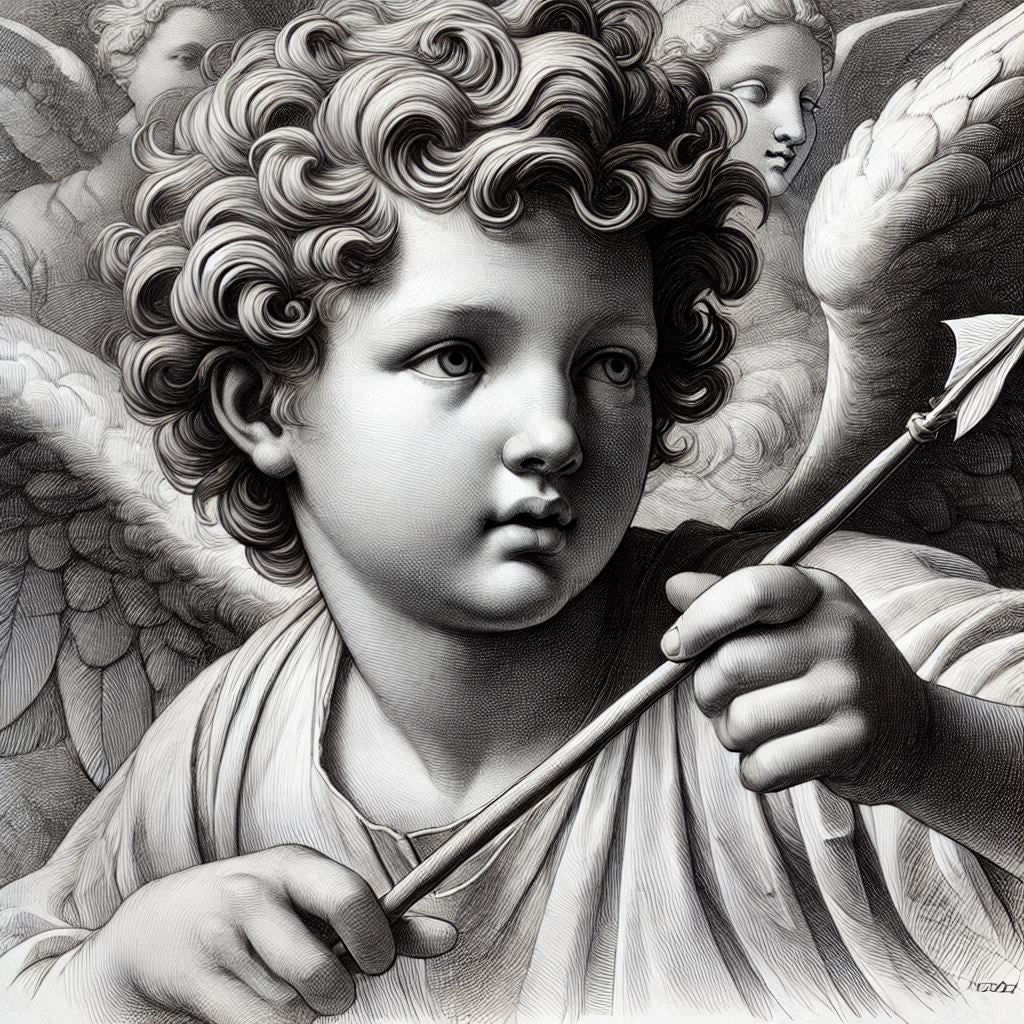Valentine's Day: A Journey Through Love, Literature, and Tradition
Valentine's Day as a Literary and Sociocultural Phenomenon
Valentine's Day, celebrated on February 14th, has established itself as a global event dedicated to romantic love and the expression of affection between couples, friends, and loved ones. This celebration, widely recognized in the contemporary world, combines an intricate historical, literary, and cultural fabric that not only refers to the possible existence of a martyr saint named Valentine but has also been shaped over the centuries by social practices, pre-Christian rituals, religious transformations, literary traditions, and more recently, by commercialization and consumerism. Understanding Valentine's Day from an academic literary perspective involves not only situating its origins but also reflecting on how medieval literature, literary romanticism, and the progressive institutionalization of courtly love influenced the crystallization of its symbols, discourses, and customs.

The first difficulty in addressing the origin of Valentine's Day lies in the ambiguity and mixture of legendary narratives. The most well-known version suggests that its name comes from the Christian martyr Saint Valentine, allegedly executed by Roman Emperor Claudius II in the 3rd century AD for celebrating clandestine marriages in a context where single soldiers were considered more effective. This story, of a religious figure defying imperial mandate to defend the union of love, became over time a powerful symbol of sacrifice for love. However, the historicity of these events is controversial, and it is likely that several saints named Valentine are intertwined in oral and written tradition, giving rise to a composite and unified figure.
Beyond the Christian context, it is pertinent to note the connection with pagan festivities such as Lupercalia, a Roman celebration that took place in mid-February in honor of fertility, purification, and the arrival of spring. Although there is no direct and verifiable causal link between Lupercalia and Valentine's Day, the coincidence in dates and themes (pairing, renewal of life, and exaltation of unions) is suggestive and has motivated numerous historians to relate these ancient customs to the subsequent Christianization of the festive calendar.
The Middle Ages and the Birth of the Literary Tradition of Courtly Love:

The crystallization of Valentine's Day as a romantic celebration must be considered in the cultural context of medieval Europe, especially between the 12th and 14th centuries, when courtly love emerged as a literary and social ideal. Poets and troubadours, inspired by literary currents from southern France and later by the influential English court, elevated romantic love to an aesthetic and intellectual paradigm. In this literary environment, love ceased to be merely a private matter to become a literary theme that demanded refinement and rhetorical virtuosity.
The work of Geoffrey Chaucer is often mentioned as one of the first to explicitly link February 14th with the choice of a mate among birds, and by extension with human love. In his poem "Parlement of Foules" (1382), Chaucer associates Valentine's Day with a symbolic encounter in which various birds choose their mates, providing an allegory of free choice and harmonious love. This literary relationship reinforces the idea that the notion of Valentine's Day as a celebration of love flourished under the influence of courtly literature and the emergence of a romantic sensibility oriented towards highlighting the inner experience of love, admiration, and mutual desire.
From Court to Pen: The Literary Tradition and the Development of Symbols
The consolidation of the day as an occasion to send letters, love notes, and romantic poetry was reinforced by the invention of the printing press and the spread of literacy, especially from the Late Middle Ages and the Renaissance. Renaissance literature, the influence of Petrarchism, and the spread of love poetry promoted the circulation of short verses, sonnets, and epistles among lovers. These literary practices, originally practiced in aristocratic circles, gradually permeated other social layers.
During the 18th and 19th centuries, amidst the rise of literary romanticism and sentimentality, Valentine's Day was consolidated in Britain and later in the United States as the day to exchange decorated cards known as "valentines." These cards, often adorned with hearts, cupids, and floral motifs, reflected the literary and symbolic ideal of romantic love. It is worth noting that this literary and cultural process intensified with the social transformations of the time: the consolidation of the bourgeoisie, the sentimentalization of private life, and greater female autonomy in the affective sphere favored the democratization of the celebration.
Global Spread and Commercialization:
By the 20th century, the festivity transcended its European cradle and spread to numerous countries, acquiring local nuances. In the United States, the consolidation of commercial Valentine's Day occurred with companies like Hallmark, which in the early 20th century transformed handmade cards into mass-produced products. This, in turn, boosted the sale of flowers, sweets, jewelry, romantic dinners, and a whole range of services and products associated with the day.
With the globalization of culture and marketing, Valentine's Day extended to Latin America, Asia, and other regions of the world, sometimes adopting different names or focusing more on the concept of friendship (as in some South American countries). The result is a hybrid celebration: on one hand, a global rite of love; on the other, a commercial engine that has generated criticism about the trivialization of sentiment and its conversion into a consumerist act. However, this criticism has not diminished its popularity, and the day remains an exciting excuse for the expression of affection.
The Role of Jewelry and Gemstones:
Today, one of the most popular ways to celebrate Valentine's Day is by giving symbolic jewelry. From pendants with intertwined initials, rings with significant gems, to custom-designed pieces to seal a formal commitment. Jewelry evokes the idea of something eternal, valuable, and unique, ideal for expressing the enduring and singular nature of love.
In this sense, gemstones have become coded symbols of certain feelings and values. Our aquamarine collection, for example, can be associated with calm and emotional clarity, while the emerald collection embodies regeneration, hope, and the depth of an ever-living love. When a buyer selects a stone to give on February 14th, they not only offer a beautiful object but a message encoded in its color, brilliance, and rarity. Aquamarine, with its soft and marine tones, speaks of harmony and transparency in the relationship. The emerald, with its intense green, expresses the fertility of feeling, the vitality of affection, and the promise of a shared future.
Cultural and Literary Reflections:
Valentine's Day, like other rituals in the festive calendar, is a polysemic and dynamic event. Its multiple historical layers—the memory of the saint, the transformation of a pagan festival, the influence of medieval literature, contemporary commercial expansion—intertwine in the collective consciousness. Each individual, each couple, reinterprets the day in their own way: an intimate dinner, a romantic getaway, the gift of a piece of jewelry marking a milestone in the relationship.
Literature has played a central role, not only in consolidating the myth but also in the constant reproduction of a romantic ideal. Medieval poets, Elizabethan playwrights, 19th-century novelists, and 20th-century screenwriters have contributed to the construction of a love iconography that feeds the popular imagination. February 14th thus becomes a day to exalt what Western culture has mythologized as "romantic love," a relatively recent concept in human history but deeply rooted in the modern psyche.
Intertextuality, Cultural Appropriations, and Dialogue with Universal Literature:
Literature, in its role as a repository of imaginaries, has been key in propagating and shaping the image of Valentine's Day through the ages. In the Middle Ages, love poetry, with its insistence on devotion, platonic admiration, and suffering from absence, found in the date an ideal platform to crystallize its metaphors. With the arrival of the Renaissance, and especially with the work of authors like William Shakespeare, the love discourse acquired a dramatic and universal density. Although Shakespeare did not explicitly refer to February 14th in his works, the love ethos that permeates his dramaturgy—from the impossible passion of Romeo and Juliet to the entanglements of A Midsummer Night's Dream—indirectly dialogues with the exaltation of love that Valentine's Day has embodied: the quest for union against all odds, the idealization of the beloved, and the hope that love will overcome social, familial, or political barriers.
Similarly, the literature of courtly love in poets like Chrétien de Troyes, the Petrarchan songbook of Renaissance Italy, and the devotional verses of Spanish mystics of the Golden Age have contributed to forming a literary heritage of love that, although it did not "invent" Valentine's Day, laid the emotional and rhetorical foundations upon which this celebration flourished. This literary substrate, for example, allows us to understand the symbolic value of jewelry and gems on the day: they are objects that capture the brilliance and permanence of feeling, just as poetic words capture the moment of passion in verse.
In non-Western cultures, the day has been reinterpreted and recontextualized. For example, in Japan and Korea, the tradition has adopted other nuances: there, women usually take the initiative by giving chocolates (and a month later, on the so-called "White Day," men reciprocate the gesture). This phenomenon demonstrates the flexibility of the holiday, which adapts to local affective norms and codes. For a literary-cultural analyst, this opens the door to reflections on how Western romantic love narratives—with their medieval and Renaissance lineage—interact with affection narratives arising in other contexts, thus generating an intercultural dialogue. Love becomes a shared language, but with local accents.
Likewise, contemporary narrative, cinema, television, and social media have multiplied interpretations and expectations around February 14th. The proliferation of romantic comedies in Hollywood, luxury brands' advertising campaigns, virtual bookstores' literary recommendations, and even ephemeral poetry on social media (where digital haikus or poetic threads about love are shared) create a hybrid space where Valentine's Day is reinvented every year. This dynamic, eminently literary and media-driven, contrasts with the stasis one might assume in a calendar of religious or civil festivities. In fact, February 14th is a date in constant resignification: each generation projects its anxieties, ideals, and its own conception of love onto it.
Jewelry, for its part, assumes a textual role in this cultural framework. A ring—especially one with a particular gem—is, at its core, an encrypted text: a message that the giver sends to the receiver, a declaration that can be read in the diamond's brilliance or the aquamarine's blue hue. In this sense, selecting a piece of jewelry on Valentine's Day can be considered an act of authorship, a symbolic production in which the giver composes their "poem" of love with metals and minerals. The jeweler, in turn, acts as an editor of signs, offering an "aquamarine collection" or an "emerald collection" that, like a poetic anthology, allows the individual to choose the piece most aligned with their sentimental story.
The academic context also invites connection with theorists and literary critics who have studied love as a cultural construct. René Girard, for example, analyzes mimetic desire; Roland Barthes, in "A Lover's Discourse: Fragments," exposes the lover's inner language as a code that constantly disintegrates and reconstructs itself. These reflections illuminate the scene of Valentine's Day as a grand stage where millions of people rehearse, in a single day, a socially consensual script about love. Thus, the date becomes a literary phenomenon in a broad sense: a cultural performance where actors (couples) interpret roles assigned by tradition, advertising, oral narratives, and literary production of past centuries.
The literary dimension of February 14th is also observed in the emergence of a critical meta-discourse that questions the commercial trivialization of love. Contemporary novelists and essayists have explored the paradoxes of Valentine's Day, pointing out how social pressure to meet romantic expectations can generate frustration, disenchantment, or even resistance. Thus, literature, which once helped erect the idyllic image of love celebrated on February 14th, today also offers ironic, parodic, or critical records that highlight the consumerist excesses and superficiality that sometimes surround the date. This literary and cultural critique adds another layer to the day's complex narrative.
Finally, it is worth mentioning the emotional empowerment that many people find in adapting the date to their own life circumstances: from those who celebrate friendship instead of romantic love, to same-sex couples who, over time, have claimed Valentine's Day as a day of visibility and normalization of affection in diversity. These processes have also found an echo in contemporary literature that narrates unconventional loves, expanding the palette of stories and feelings that are updated every February 14th.
Conclusions:
Valentine's Day is a cultural mosaic. Originally linked to a martyr saint and fertility rites, it evolved to become the emblem of romantic love. Literature played a fundamental role in this metamorphosis: without Chaucer's allegories, medieval love poetry, courtly refinement, and the subsequent influence of literary romanticism and sentimental movements, contemporary Valentine's Day would hardly have acquired its current character.
At the same time, the celebration embodies the tensions between tradition and modernity, spirituality and consumerism, intimate experience and the public spectacle of love. In a globalized present, where cultural boundaries are powerful and information flows rapidly, February 14th highlights the human capacity to re-signify dates and practices, incorporating new nuances, products, and symbols.
Gifting a piece of jewelry with a precious stone from our collections, whether an aquamarine suggesting serenity or an emerald symbolizing a fruitful and energetic love, fits into this vast symbolic fabric. Far from being a superficial gesture, it can be understood as an act of cultural affiliation with the historical lineage of Valentine's Day, a way to participate in a millenary tradition that combines poetry, spirituality, history, commerce, and an incessant quest to express love in all its dimensions.
Thus, Valentine's Day is not merely the "day of love" in a banal sense, but a stage where the stories of poets, martyrs, merchants, lovers, and thinkers converge. A day that, through a simple ring or carefully written words, allows the complex narrative of romantic feeling in Western culture to continue to be woven, and today, beyond its geographical and temporal borders.
Gerad Madrid de San juan




